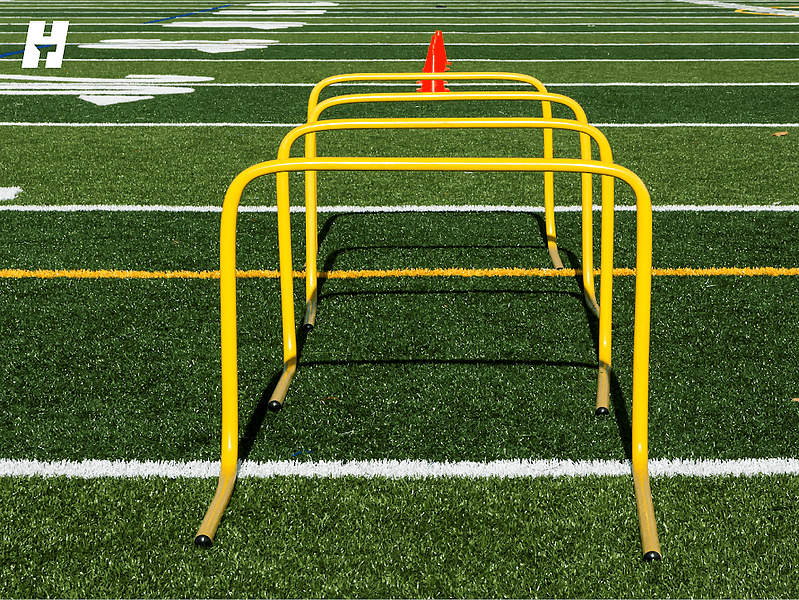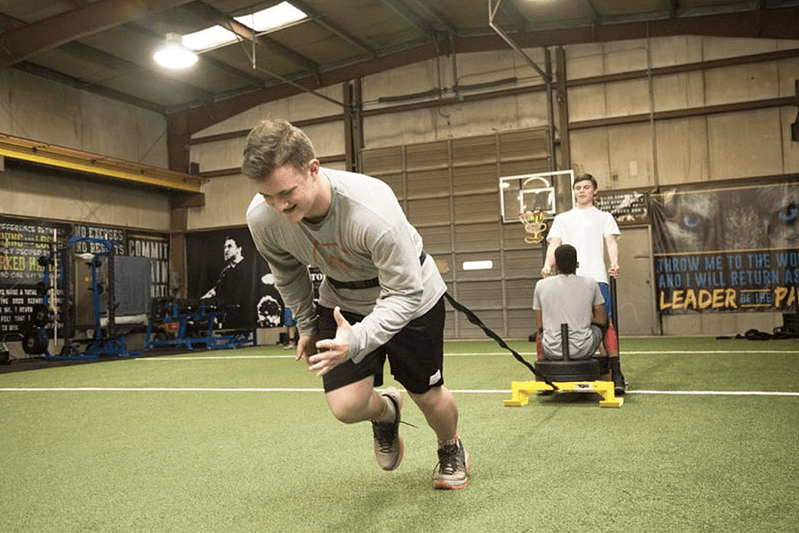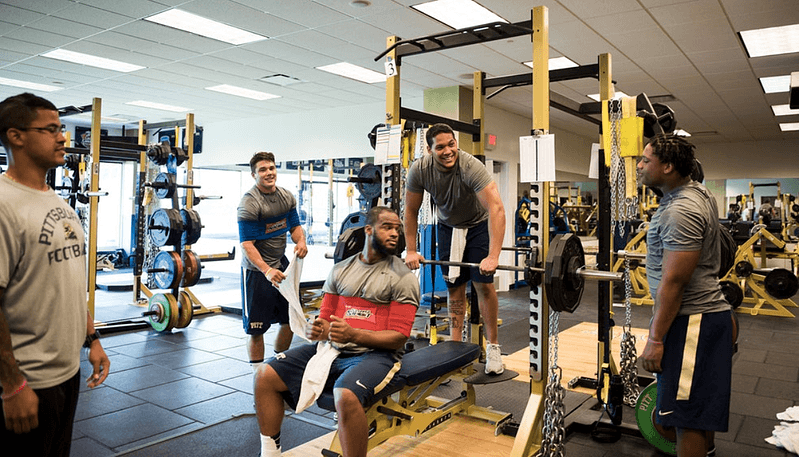Youth Sports Part 3: Tapping into Learning Styles
MindsetABOUT THE AUTHOR

Phil White
Phil White is the co-author of Waterman 2.0 (with Dr. Kelly Starrett), The 17 Hour Fast (with Dr. Frank Merritt), Unplugged (with Dr. Andy Galpin and Brian Mackenzie) and Game Changer (with Fergus Connolly). He writes for Train Heroic, HANAH, Momentous, XPT, Onnit, StrongFirst, TRX, McGregor FAST, and other leaders in human performance. In a previous life, Phil was nominated for a screenwriting Emmy. He lives with his wife and two sons in the mountains of Colorado. Connect with Phil at www.philwhitebooks.com
Now let’s take a closer look at how to optimize skill acquisition and development.
It’d be so easy to coach if every young athlete learned in the same way, wouldn’t it? But unfortunately, that isn’t the case. So even though you might be very comfortable communicating and teaching in a certain fashion, a one-size-fits-all approach is only going to benefit a fraction of the players you’re trying to coach. The rest are either going to have sub-optimal learning experiences or the lessons will go completely over their heads.
To ensure that doesn’t happen, the goal of this post is to help you be more flexible in your coaching so your young athletes reap the benefits of your expertise and improve their skill sets.
The first order of business is outlining the seven different learning styles:
- Visual (spatial): Emphasizes pictures, images, and spatial understanding
- Aural (auditory-musical): Finds meaning in sound and music
- Verbal (linguistic): Utilizes speech and writing
- Physical (kinesthetic): Discovers using the body and touch
- Logical (mathematical): Prioritizes logic, reasoning, and systems thinking
- Social (interpersonal): Benefits from group-learning scenarios
- Solitary (intrapersonal): Prefers learning alone or one-on-one with a coach/teacher
According to a leading online dyslexia resource, the average K-12 classroom contains 30 percent visual learners, 25 percent auditory learners, and 15 percent kinesthetic learners, with the remaining 30 percent doing best with a combination of styles.
Some of these styles are more conducive to a sports context than others, and it’d be a mistake to burn down your entire coaching philosophy in an effort to accommodate all seven equally. But what you can do is understand these styles more clearly so you can not only appeal to the learning preferences of the kids you’re instructing, but also overcome roadblocks in their skill development that have nothing to do with laziness or them not listening.
With this aim in mind, let’s go through each style one by one:
// Visual (Spatial)
Visual learners understand concepts best when they can see them. This is where your skills as an athlete come into play, as you can demonstrate the difference between a technically sound free throw and a Shaq-like heave instead of merely telling your players to keep their elbow tucked in and follow through. You could show the team a video of a free throw ace like Steve Nash or Steph Curry doing their thing at the charity stripe. Then have them go away and practice.


// Aural (Auditory-Musical)
It can be difficult to incorporate aural learning as a coach, although you can make up little rhymes that have a musical quality and are memorable to convey certain themes. For example, my co-author Fergus Connolly got players to improve their recovery with the simple “Glow, Slow, Flow” recovery mantra (see our book Game Changer for more on this).
// Verbal (Linguistic)
These are your power listeners, who hang onto every word you say. They aren’t just absorbing what you’re telling them, but also connecting this to how they’ll move their body in the next drill or scrimmage. So try to make sure that what you’re saying is clear and concise, as verbal learners’ rapt attention can lead to them becoming overwhelmed by bloviation. Another way to reach your linguistic learners is to ask them to write out their role as they see it and jot down mantras and values for the rest of the group. They’ll find meaning in such exercises, and their teammates will also glean from their insights.
// Physical (Kinesthetic)
Physical learners are often autodidacts who develop skills by doing them. You can talk until you’re blue in the face about this or that concept, but until a kinesthetic learner can try it for themselves, they’re likely tuning you out. Any experienced coach will tell you that there is an unusually high percentage of physical learners among athletes. This emphasizes the need for you to create realistic learning experiences. The simplest way is to have your athletes play small-sided games (like 5 v 5 and 3 v 3 in soccer, for example) that require them to problem solve in a manner that mimics what they’ll encounter in actual competition.


// Logical (Mathematical)
The stats revolution that Bill James and his Moneyball methods inspired can turn some people off (confession – I’m one of them!). However, the logical learners on your team will love to geek out on VORP, WARP, and all the other acronyms that have become part of the sporting lexicon since Billy Beane did his thing at the Oakland A’s. This isn’t to say that you should use numbers for their own sake – to make metrics meaningful, they must always be utilized in qualitative context that has relevance to the situation. Instead, stick with simple yet meaningful stats that reflect your style of play and will lead to better game day performance. For example, you could encourage the kid who’s a head taller than her teammates to average 10 rebounds a game next season.
// Social (Interpersonal)
There’s a tendency in youth sports – and sports in general – to try and correct problems or shortcomings that occur in games by isolating players and making them practice a certain skill over and over. For example, if a kicker in football or rugby misses a potential game winner, then a coach might pull them out of practice the following week and have them perform hundreds of kicks on their own. There are three problems with this.
- First, such volume is completely unrelated to what the player will encounter in a game, and fatigue will inevitably compromise quality.
- Second, many team sports athletes thrive in a group setting – hence why they signed up in the first place.
- Third, there’s no learning involved in mindless, high-volume repetition.


It’d be better to keep the player who missed the field goal or conversion in the team environment until the very end of practice, and then have him or her make just a few kicks under game-like conditions. This way, you maintain the kind of interpersonal learning the athlete craves, while also getting them ready for the next fixture.
// Solitary (Intrapersonal)
The solitary learner often thrives as an individual athlete in a discipline like singles tennis, ultrarunning, or surfing. In a team context, a solitary learner is the player who’s new to the football team but shows up to camp having memorized the entire playbook front to back and is ready to roll on the first day. If you have an introvert or two on your squad, give them homework assignments sometimes, like breaking down game film and then sharing with the team how you can improve in the next game. They’ll dig it.
// See One, Do One, Teach One
In the business world, thought leaders have attempted to simplify things by consolidating the seven learning styles above into just three: visual, auditory, and kinesthetic. So if what we just covered seems impossible, try to focus the teaching component of your coaching on these.
One way to combine all three is to follow the “see one, do one, teach one” model pioneered by William Stewart Halsted to educate trainee surgeons at Johns Hopkins in 1890 and favored by coaches like Functional Movement Screen and Functional Capacity Screen co-creator Gray Cook. “If you truly understand a movement, you’ll be able to coach it,” Cook said. “And if you don’t, there’s no better way to work out the kinks than to become the coach for the rest of the team for a while.”
The “see one, do one, teach one” progression Cook is referring to will groove deep learning in the young athlete who’s demonstrating the skill, and will also give a shy kid the opportunity to build self-confidence – a major intangible benefit of participating in youth sports.
Remember, nobody is asking you to be John Wooden, Sir Alex Ferguson, or Lisa Alexander (Australian netball coach, who once had a higher win rate than even the All Blacks) here. Just being aware of the different ways in which your young athletes might learn, and trying to accommodate these as best you can in the time you have available, will lead to sustained progress, while also making you a better coach.
Are you a better coach after reading this?
More coaches and athletes than ever are reading the TrainHeroic blog, and it’s our mission to support them with useful training & coaching content. If you found this article useful, please take a moment to share it on social media, engage with the author, and link to this article on your own blog or any forums you post on.
Be Your Best,
TrainHeroic Content Team
HEROIC SOCIAL
HEROIC SOCIAL
TRAINING LAB
Access the latest articles, reviews, and case studies from the top strength and conditioning minds in the TH Training Lab

